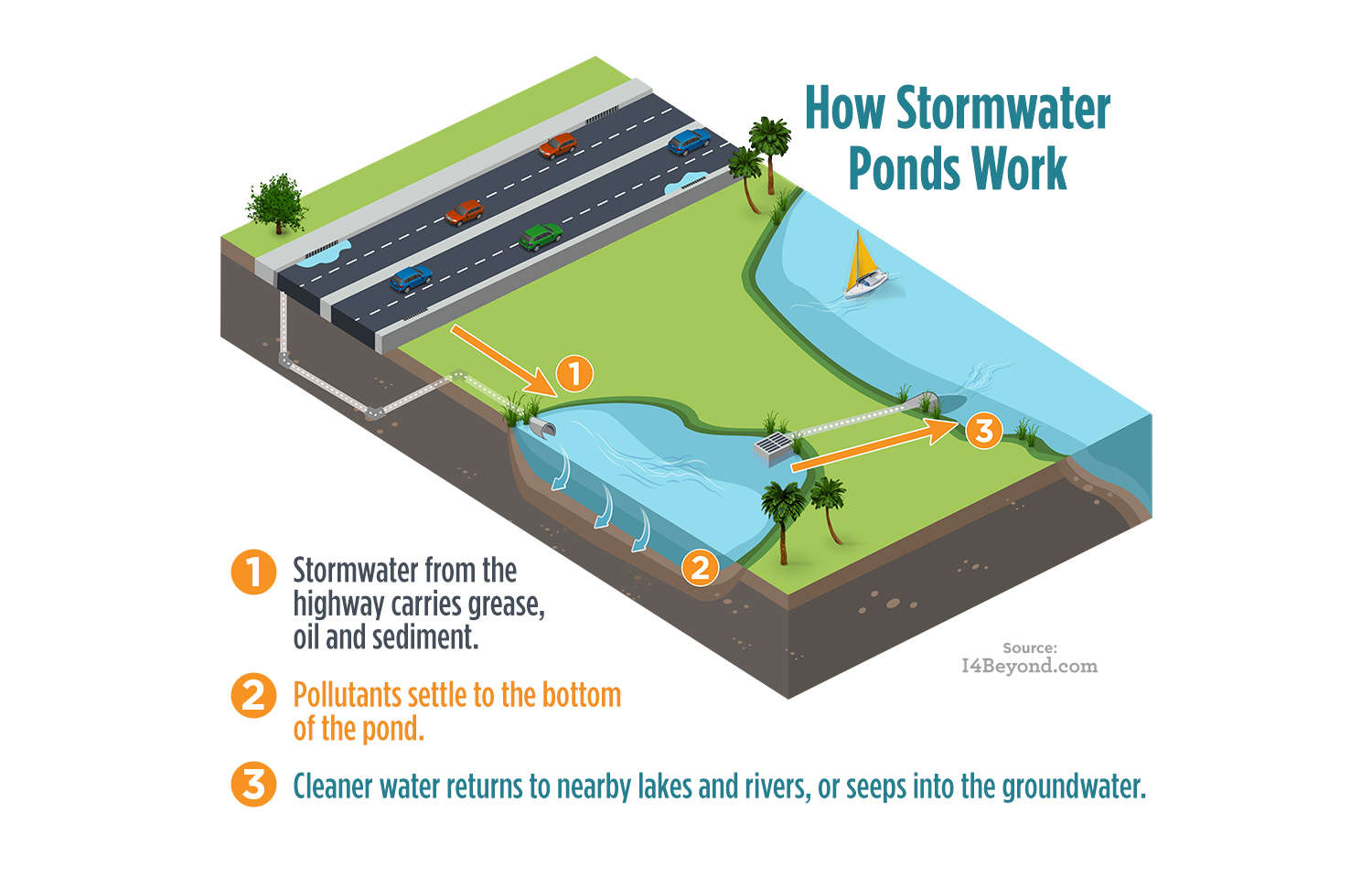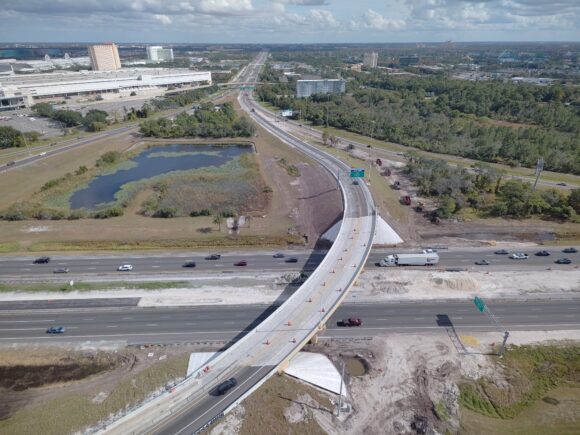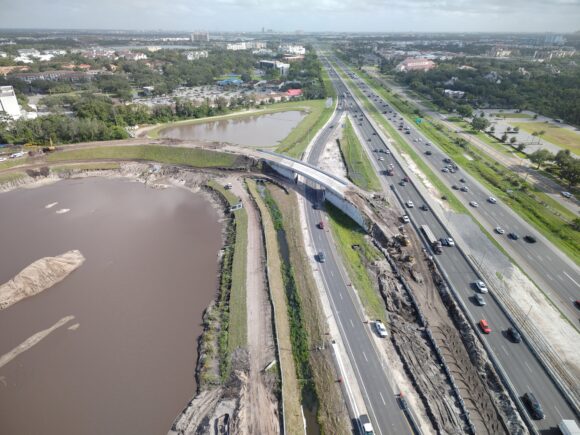In the 40 miles of I-4 Beyond the Ultimate, there are more than 115 stormwater ponds. Design plans include more than 70 new ponds to protect surrounding areas from flooding and to keep pollutants out of Florida’s natural waterways.
Stormwater ponds collect the rain that runs off pavements and other impervious areas to prevent flooding. Later, after pollutants are filtered out, the water is slowly released.
In areas where there is substantial pavement, like highways and busy intersections, ponds must be designed to remove oil, grease and sediment from the runoff. State regulations require the water leaving the pond be at the same quality as the body of water it will flow into. Gravel and dirt at the bottom of the pond filter the stormwater as it seeps into the ground below. As pollutants settle to the bottom, cleaner water can be drained from the top.
The Florida Department of Transportation (FDOT) decides where to build new stormwater ponds by studying nearby locations, taking into account elevations, soil type, the existing water table and what body of water will get the runoff. Engineers also analyze impacts to wetlands and endangered species, cultural resources (like archeological sites), potential for contamination, and potential impacts on nearby utilities.
FDOT publishes a Pond Siting Report as part of its Project Development and Environment (PD&E) Study. The report shows how FDOT reaches its recommendations. The reports are updated later in the design phase of the project.
The Pond Siting Reports for all of the I-4 Beyond the Ultimate design segments are available at i4beyond.com/pde.



 ATTENTION DRIVERS: Overnight Closure of the Westbound I-4 Exit Ramp to Eastbound S.R. 528 December 21
ATTENTION DRIVERS: Overnight Closure of the Westbound I-4 Exit Ramp to Eastbound S.R. 528 December 21 December Marks National Impaired Driving Prevention Month
December Marks National Impaired Driving Prevention Month Cold Weather Brings Unique Construction Challenges
Cold Weather Brings Unique Construction Challenges What’s Next for the New Loop Ramp on Apopka-Vineland Road
What’s Next for the New Loop Ramp on Apopka-Vineland Road